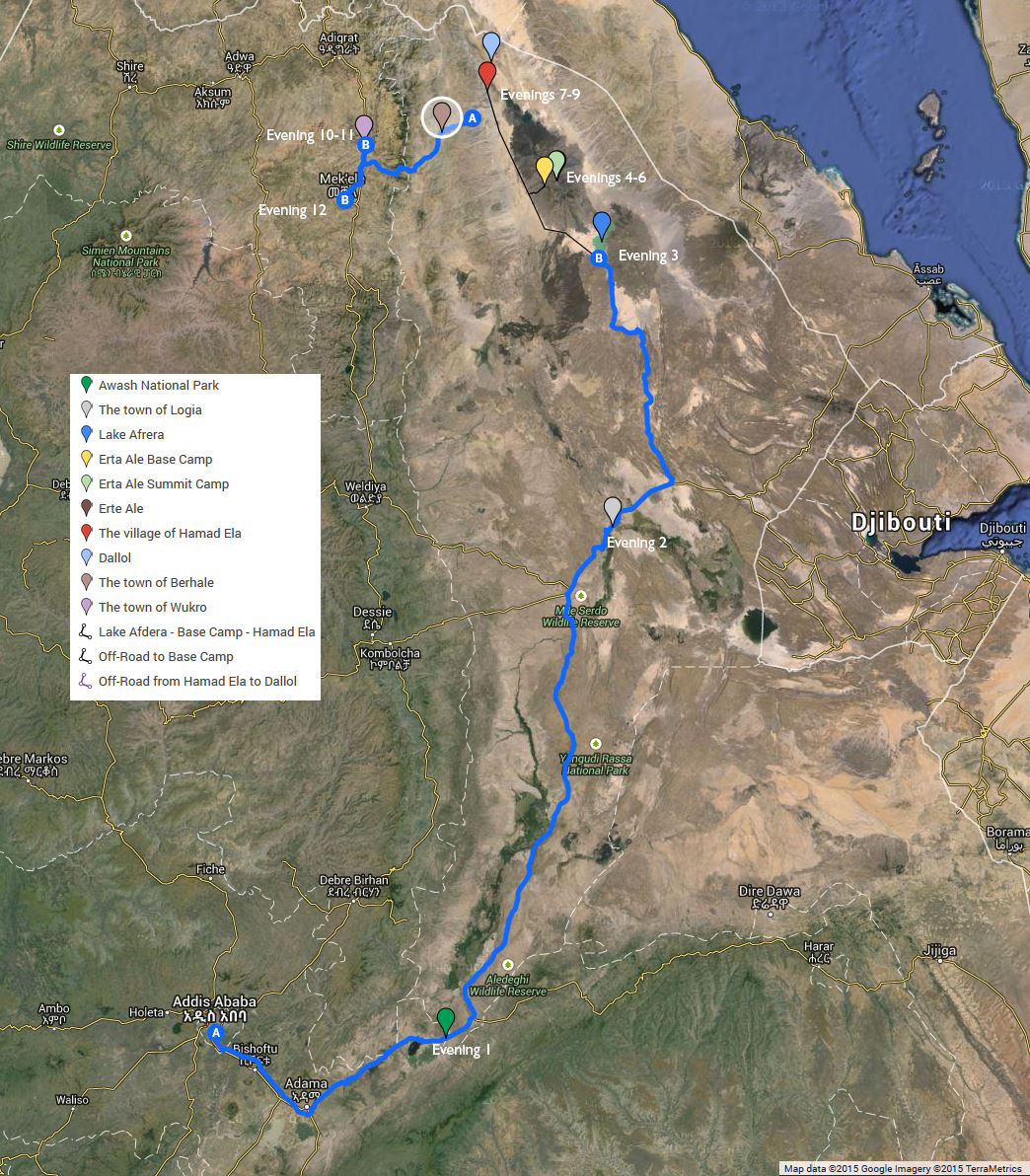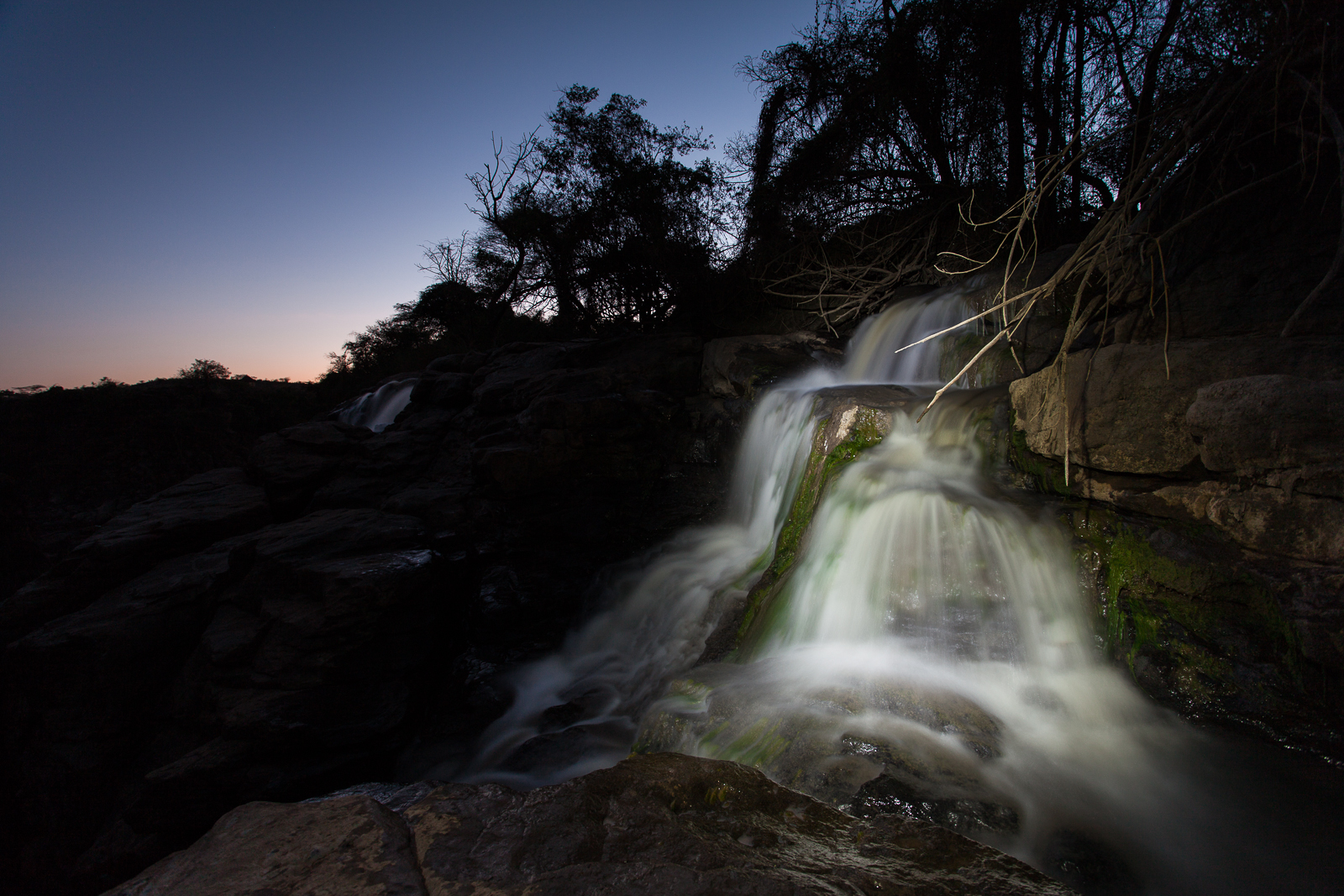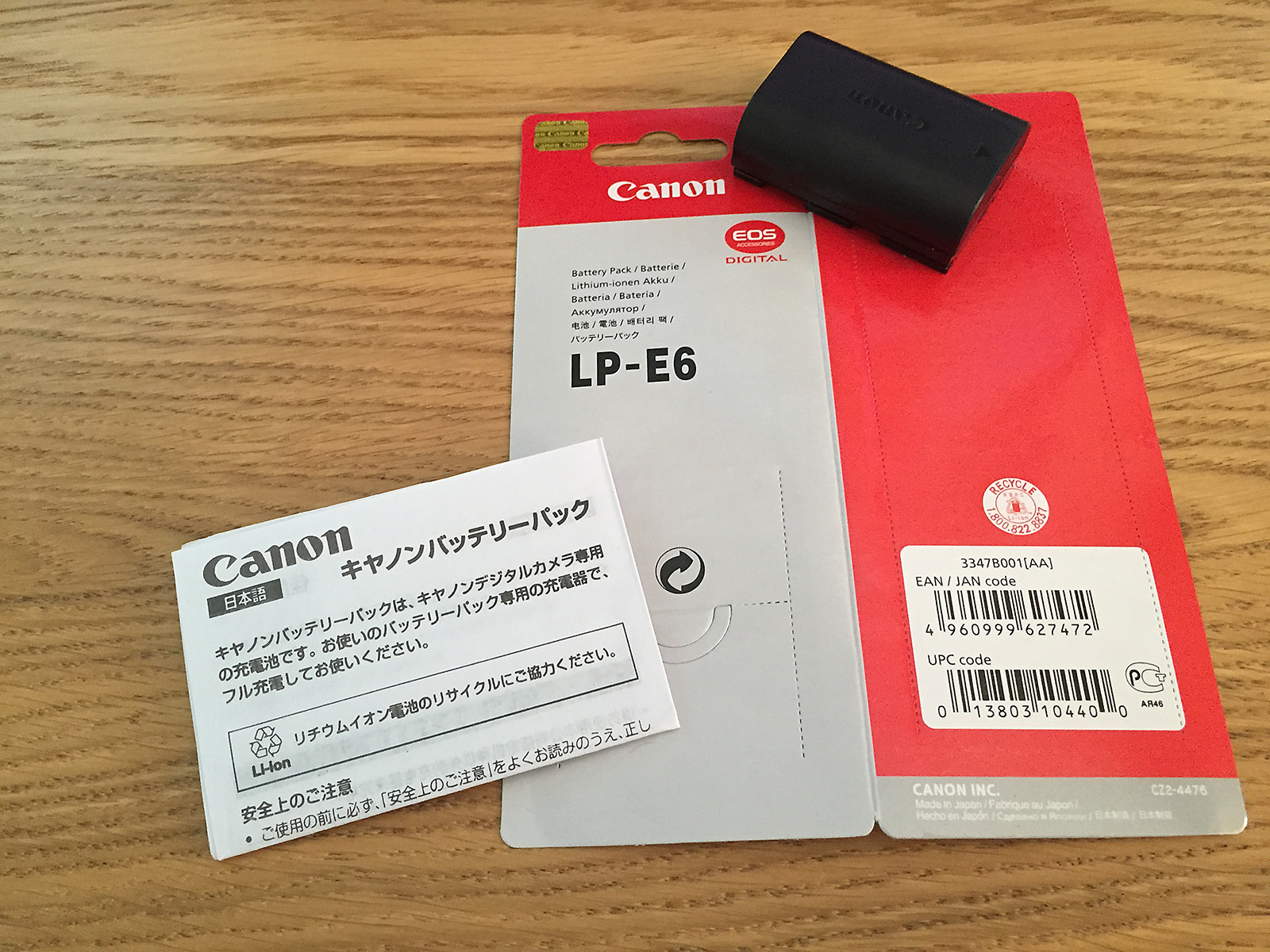It’s beginning to get chilly here in the UK and so the annual panic over snow is about to start. With that in mind I thought it would be nice to post an image that embodied warmth.
I’m in the middle of writing up the third part of the review (days 4 through 6) of the trip to Ethiopia – the days where we were at the Erta Ale lava lake – and so I’m not going into details today but it is essentially it is a hole 47 kilometres deep and full of molten lava. The level of the lava can rise or fall a few metres but not enough to make a difference to the temperature when you stand close of the rim, which is hot. Very hot. The fun starts when there’s gas in the upwell as it turns the usually gently bubbling, boiling rock surface into something even more spectacular: A Stombolian eruption.
There’s a convenient, but easily climbable peak not too far back from the lake and this gives a great downward view of not only the lake but the whole caldera. This was the third and last day that we were at the lake before heading further north to Dalol and nature had been kind by putting on frequent displays of Stombolian eruptions, lasting up to two minutes at a time. After spending much of the day at ground level trying to capture video and time lapses of the activity, I and one of the other photographers on the trip decided to head up here to gain a different perspective. I was up here with the intent of setting up a panoramic shot but when looking down one of the eruptions started.
This was very much an opportunistic shot. I didn’t have time to frame the shot nor to zoom in so the resulting image captured the moment, but not ideally. In fact I initially dismissed the image as unusable in the forthcoming gallery, but then realised that whilst it may not make it into the final 25 images it still tells a story and gives a great idea of just how ‘up close and personal’ you can get with a volcano.
There has been a significant amount of cropping of the original image – enough that this wouldn’t print well at A3+. Other that that I have only made clarity and vibrance adjustments.
Oh, definitely click the image to enlarge!
![Erta Ale can have moments of breath-taking wonder... [Click to enlarge!]](http://davehoggan.com/wp-content/uploads/2015/01/MG_15011.jpg)



![One of the many short stops you'll make over the next 13 days. The trip is all about volcanoes and geology and with a trained geologist for a guide you'll certainly learn about geology... [Click to enlarge!]](http://davehoggan.com/wp-content/uploads/2015/01/MG_9702.jpg)
![The first day's travel was along route 4 to Awash National Park covering a stretch of approximately 200km... [Click to enlarge!]](http://davehoggan.com/wp-content/uploads/2015/01/Day-1-Route.jpg)
![On the first day of driving we saw in the region of 20 overturned trucks. [Click to enlarge]](http://davehoggan.com/wp-content/uploads/2015/01/MG_9700.jpg)


![Day two is more time in the 4WD vehicles covering distance... [Click to enlarge!]](http://davehoggan.com/wp-content/uploads/2015/01/Day-2-Route.jpg)
![If you're looking to get some quality wildlife photography this may not be the trip for you. We spent a couple of hours in Awash national Park and saw relatively few animals... [Click to enlarge!]](http://davehoggan.com/wp-content/uploads/2015/01/MG_0816.jpg)
![Today you'll get to stop in one of the road-side towns that have grown around the busy transport link between Addis and Djibouti [Click to enlarge!]](http://davehoggan.com/wp-content/uploads/2015/01/MG_0878.jpg)
![The second day begins to show just how empty Ethiopia can be... {Click to enlarge!]](http://davehoggan.com/wp-content/uploads/2015/01/IMG_0102.jpg)





![The kit I took to Ethiopia consisting of the panel (top), the red cable connecting the panel and V72 battery, the black cable to connect the V72 to the camera charger and the white/black cable to connect to my MacBook Air. The car charger (bottom) also came in useful. The camera charger is not shown as it did not survive... [Click to enlarge]](http://davehoggan.com/wp-content/uploads/2015/01/IMG_0173.jpg)
![Although not part of the provided system the magnetic mount really made a huge difference - and one I recommend Voltaic Systems consider adding... [Click to enlarge]](http://davehoggan.com/wp-content/uploads/2015/01/MG_0190.jpg)
![A close-up of the panel on the 4WD showing the (home-made) silver metal magnetic mounts and the (provided) plastic loops in each corner for cable-tie mounting. The panel happily survived repeated bumps and knocks as well as being covered in dust and volcanic ash... [Click to enlarge]](http://davehoggan.com/wp-content/uploads/2015/01/IMG_0136.jpg)
![Using the ten foot cable I had a lot of flexibility as to where I put the V72 in the 4WD. All I then had to do was wait for the sun to work its magic... [Click to enlarge]](http://davehoggan.com/wp-content/uploads/2015/01/IMG_0130-2.jpg)
![Home at Erta Ale. "A compact, fully air-conditioned, one bedroom apartment backing on to a stunning panoramic landscape." it said in the brochure. It even came with free mice... [Click to enlarge]](http://davehoggan.com/wp-content/uploads/2015/01/IMG_0166.jpg)
![We relied on the Voltaic charger. Several Canons, a Fuji, two iPhones and even the quadracopter were all kept alive by the solar charger... [Click to enlarge]](http://davehoggan.com/wp-content/uploads/2015/01/MG_0701.jpg)
![The provided plastic attachments allowed the panel to be cable-tied to the shack and the cable fed inside via one of the many, many holes. The next nearest source of power was a 4WD somewhere in the distance... [Click to enlarge]](http://davehoggan.com/wp-content/uploads/2015/01/IMG_0162.jpg)
![By day three the lack of camera battery charger would have been catastrophic to the shoot and shots like this would have been missed... [Click to enlarge]](http://davehoggan.com/wp-content/uploads/2015/01/MG_1353.jpg)